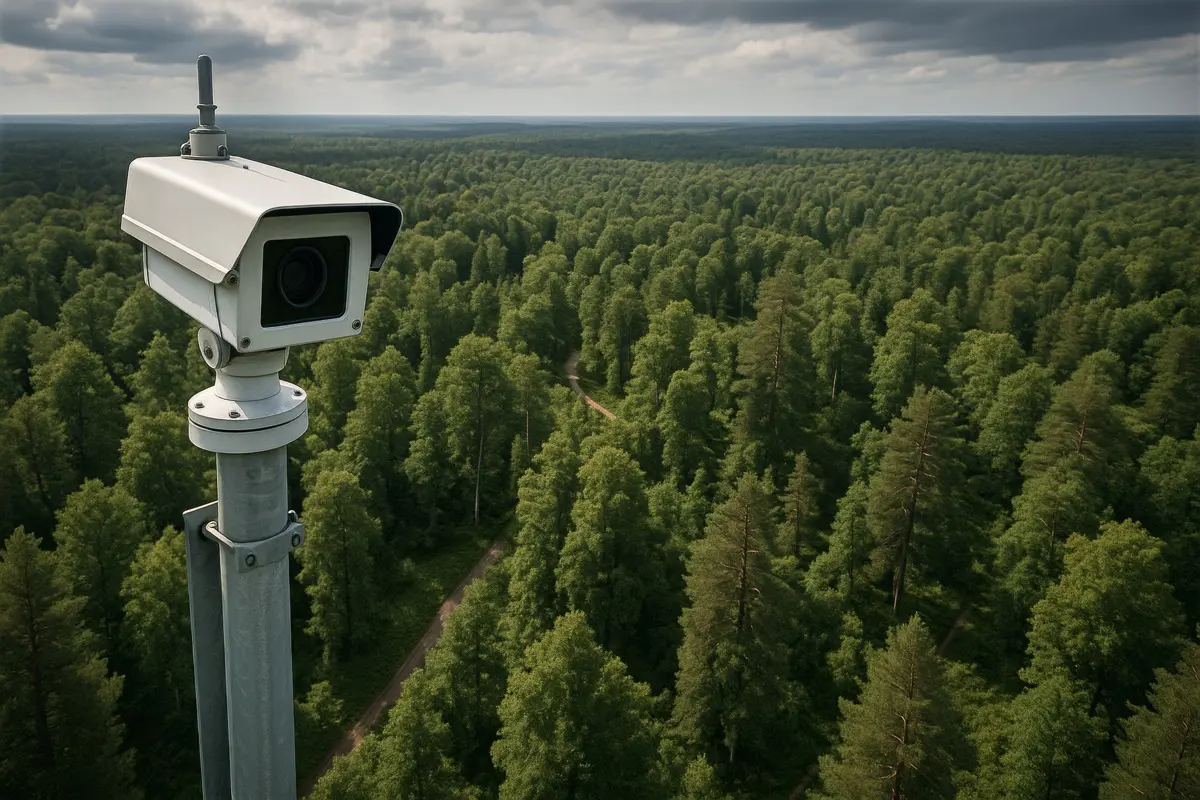Revenir à la veille
Dans les forêts aux portes de Paris, les tours de guet se dressaient autrefois comme des sentinelles. Chaque saison sèche, des agents de l’Office national des forêts et des bénévoles y montaient pour scruter l’horizon et repérer un mince panache avant qu’il ne devienne mur de flammes. Au début des années deux mille, ces plateformes se sont tues. Les smartphones ont accéléré les signalements et la surveillance humaine s’est effacée.
Un terrain d’essai pour une détection par l’IA
At four former ONF lookout sites, cameras mounted high above the treetops sweep the landscape every thirty seconds. Each camera is tethered to a microcomputer no larger than a deck of cards. There, an AI program parses each frame, scanning for the faintest trace of smoke. If it sees something suspicious, the system instantly forwards images and an alert to the fire command center.
This quiet machinery has already shown its worth. On May 16, the cameras caught a blaze ten minutes before the first human caller. On June 10, when residents phoned in to report only a “burning smell,” the AI delivered the coordinates of the actual ignition point. And on June 25, at six in the morning, the system detected flames a full fifty minutes before the first emergency call. “That’s the strength of the system,” explains Commander Paul-Édouard Rolland of Sdis 77. “At dawn or late at night, when the forest is empty, the cameras are still awake.”
False Alarms and Fine-Tuning
Like any apprentice, the system has stumbled. Early on, low clouds or harvest dust kicked up by farm machinery sometimes fooled the algorithms into sounding the alarm. Engineers are now training the AI to read sequences of images, recognizing the distinct motion patterns of smoke versus harmless haze. Each false alarm becomes a lesson, sharpening its eye.
Who Pays for the Watch
The project’s budget—164,000 euros—is financed primarily by the French Ministry of Agriculture and Food Sovereignty, which covers eighty percent as part of its national wildfire defense program. The remaining funds come from the local fire service, and Pyronear hopes to attract corporate sponsors eager to associate their name with climate resilience.
Old Allies, New Tools
For ONF, which still oversees forest management, the system is a welcome ally. “The earlier we detect, the faster we can respond,” says Sophie David of ONF’s eastern Île-de-France office. But she also cautions that technology alone cannot save the woods. Fires here often smolder underground in peat-rich soil, releasing smoke only much later. Visitors are still urged to call emergency numbers (112 or 18) at the first sign of trouble.
The Fire Rules of a Warming World
With hotter summers and recurring droughts, the risk is no longer theoretical. Fontainebleau now enforces strict rules: no smoking, no camping outside three designated sites, and no overnight parking in forest lots. Fines can reach four hundred euros. What was once considered leisure freedom is now a matter of collective survival.
Still, there is something hopeful about the sight of these digital towers. They stand as a hybrid of old instincts and new tools: the vigilance of the watchman, extended by silicon and code. If the model works here, it may spread across France, and perhaps beyond—another adaptation in an age when fire seasons arrive earlier, burn longer, and test us all.

